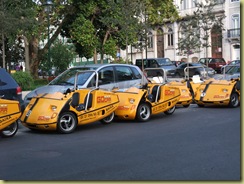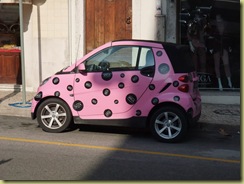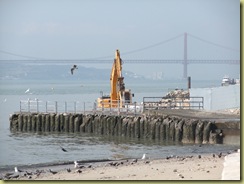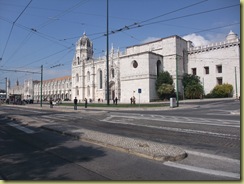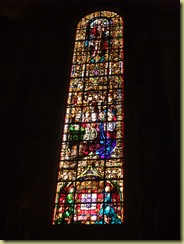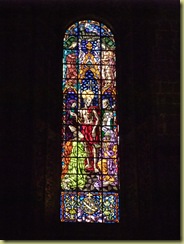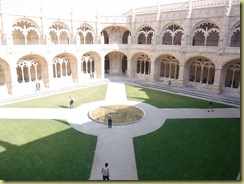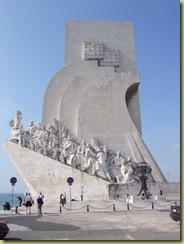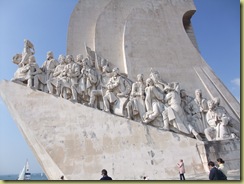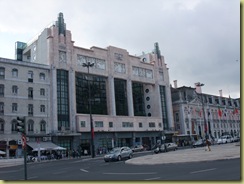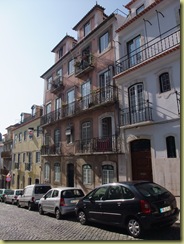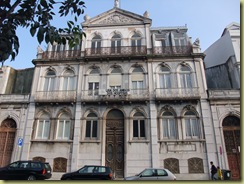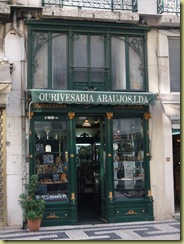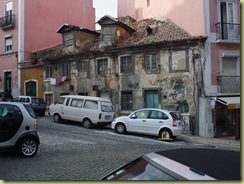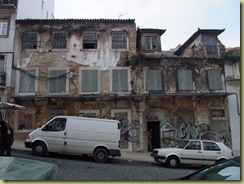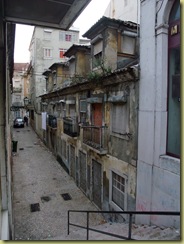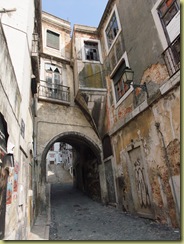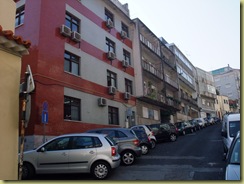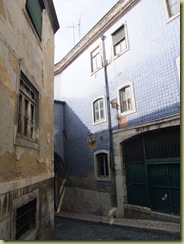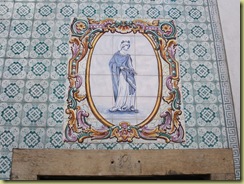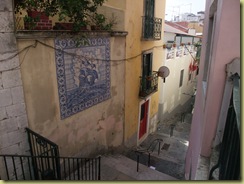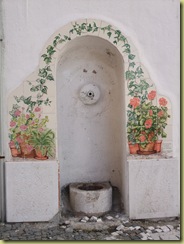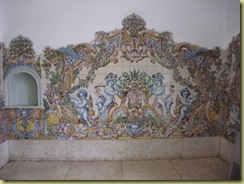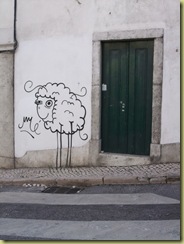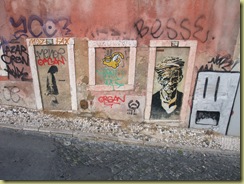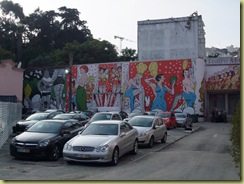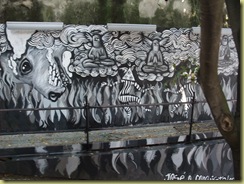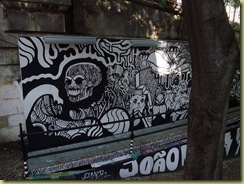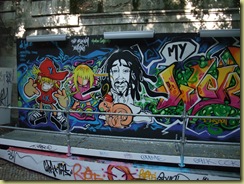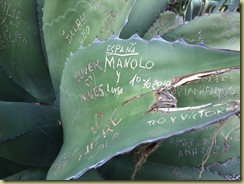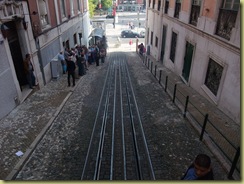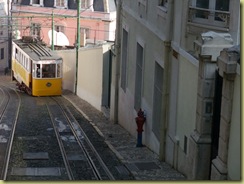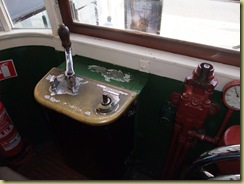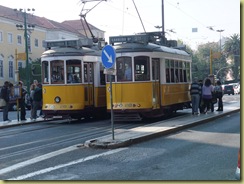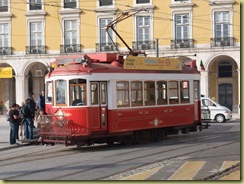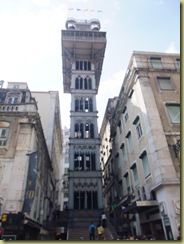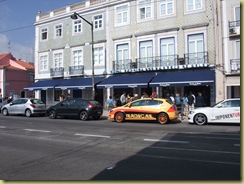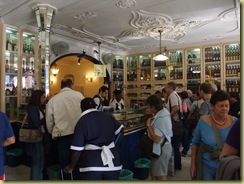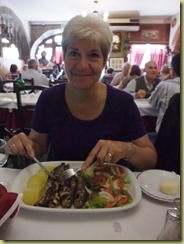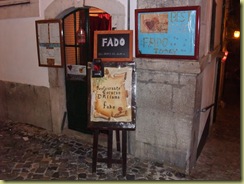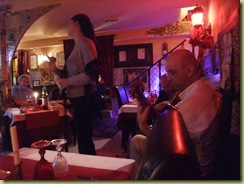Sintra is well worth a visit and the easiest way to get there is to take the train from Rossio Station – a wonderful building on the outside and totally

over modernised on the inside. After a 40 minute journey through some of the most dreary flat ridden suburbs imaginable, one gets to Sintra. The
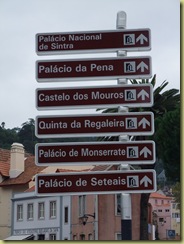
first decision is how many palaces to see – there are rather a lot! The
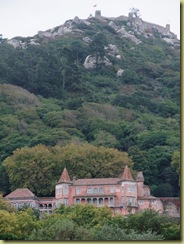
Palacio da Pena is on the top of a rather formidable looking hill but there is a bus which goes up there. Walking past the Town Hall,
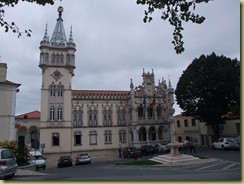
you come to the palace which everyone comes to see - the Palacio Nacional de Sintra. It is famous for the two kitchen chimneys which tower over the palace.
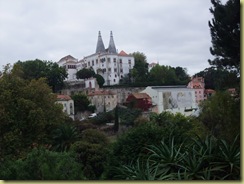
The Palace looks out over a large courtyard in one direction (with the Palacio da Pena on the top of the hill)
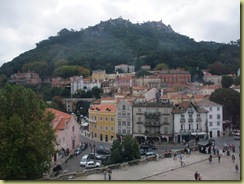
and gardens, fields and the sea in the distance in another
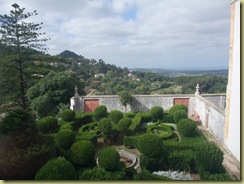
Dating from the 14th / 15th Century, the palace displays a variety of architectural styles, some of them very beautiful, others less so. If you want to learn more about the history of the place, Wikipedia has a good entry on it. There are a number of halls (this is the Swan Hall)
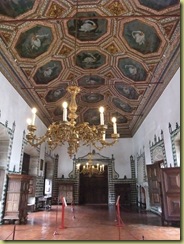
and it is particularly impressive. Like much of the palace it was damaged in the 1755 earthquake but is now well restored.
One of the features of the palace is that a number of the ceilings are beautifully decorated,
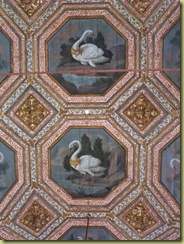
here is a detail from the Swan Ceiling in the Main Hall. Another room – The Magpie Room (Sala das Pegas) has a ceiling covered with Magpies.
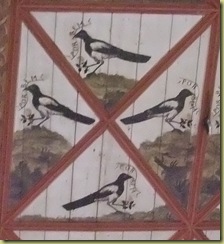
The birds have the words "por bem" (for honour) coming out of their beaks. There are numerous accounts (I have found four so far) as to why there are Magpies on the ceiling – if you want to know them then Google.

The Galleon Room has a ceiling wonderfully painted with Galleons – here is a detail
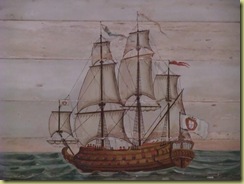
Blazons Hall ceiling is very ornate and covered in gilt. The ceiling in
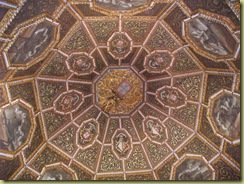
carved gilded woodwork is crowned by the Royal Coats-of-Arms and is surrounded by the Armorial bearings of seventy-two noble families
The Palatine Chapel was built at the beginning of the 14th century
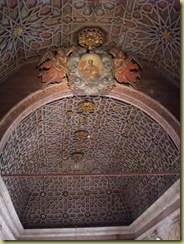
and is said to show Islamic influence, which is not surprising since the palace combines Islamic design as well as design from other eras in Portugal’s history.
